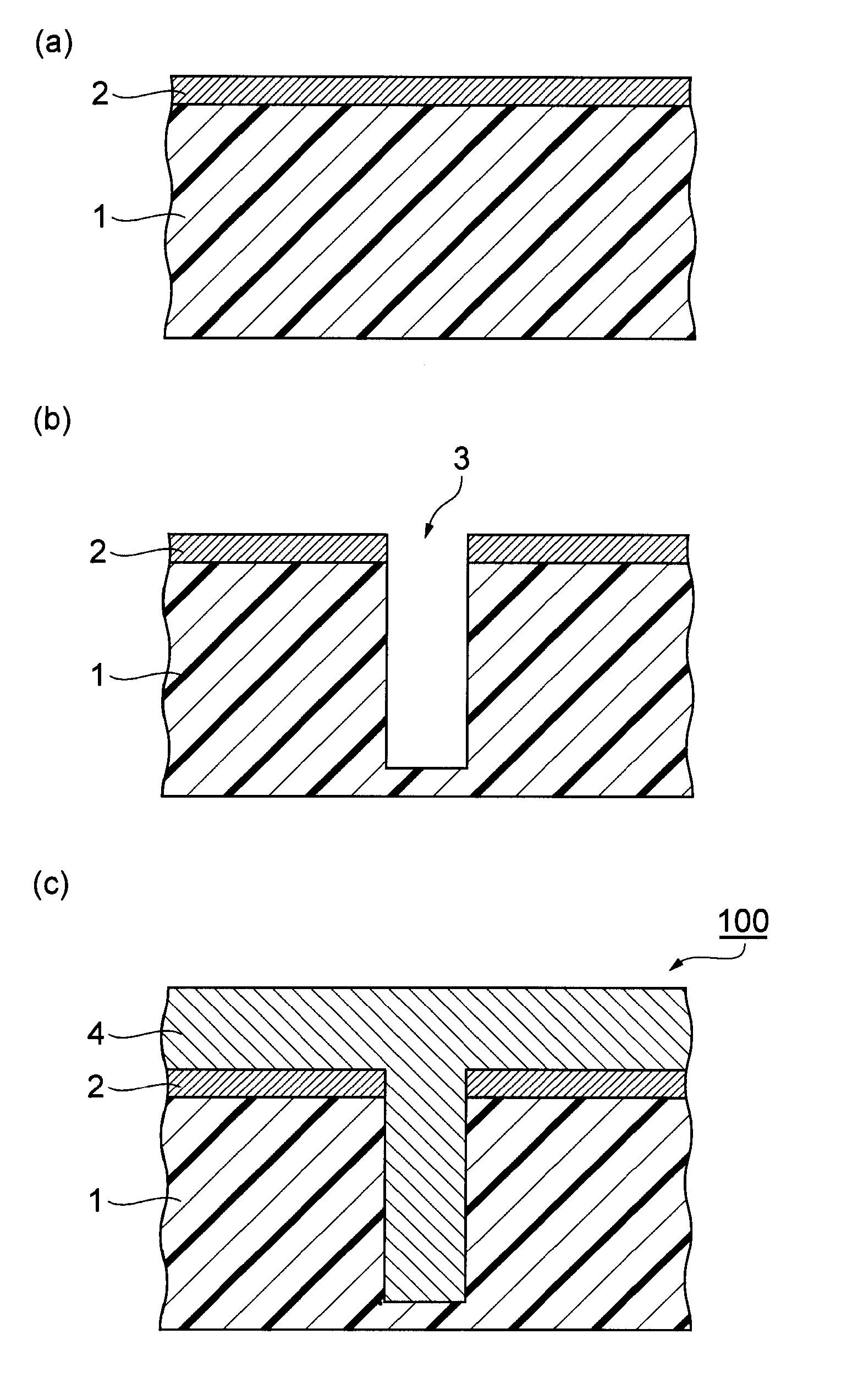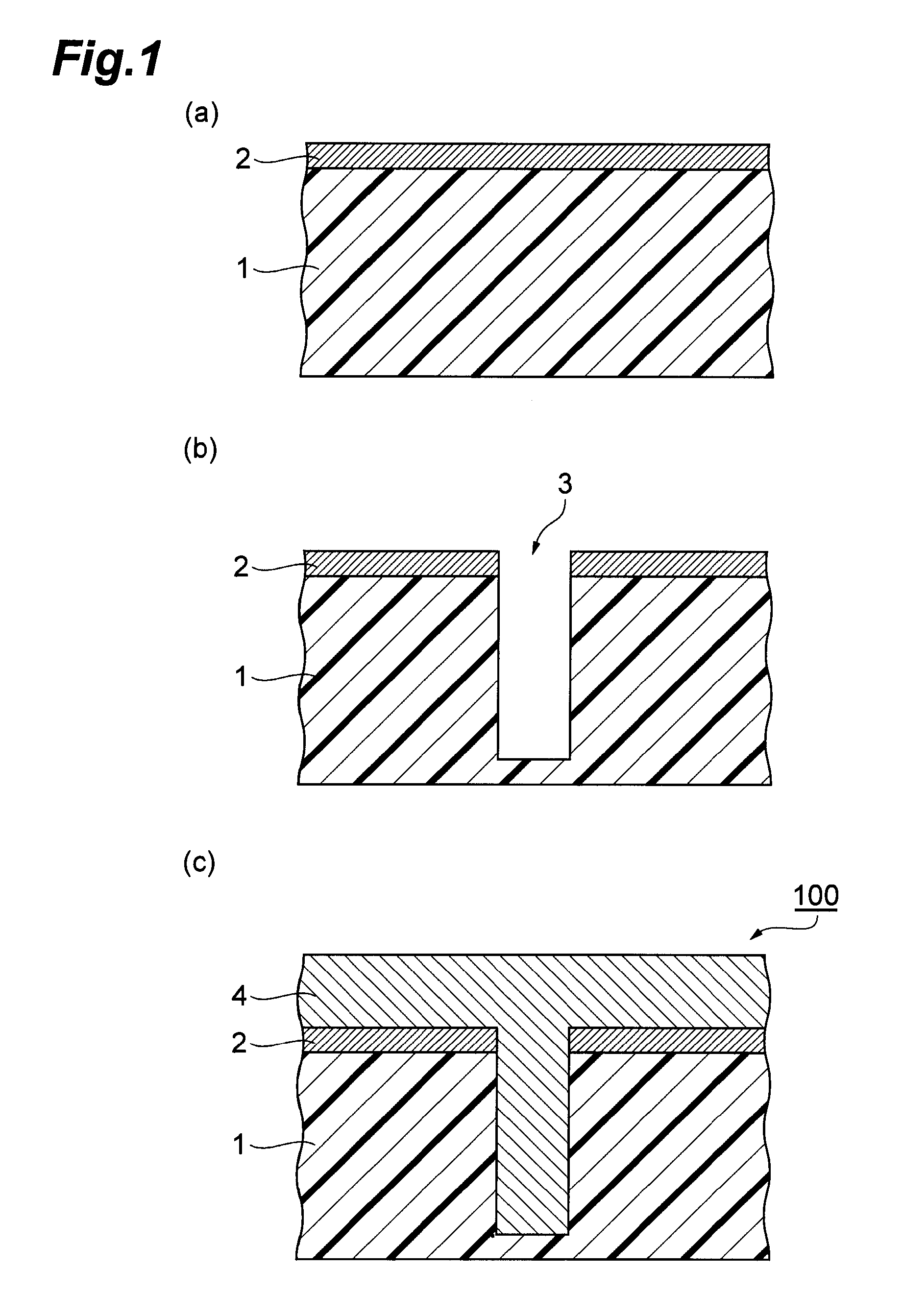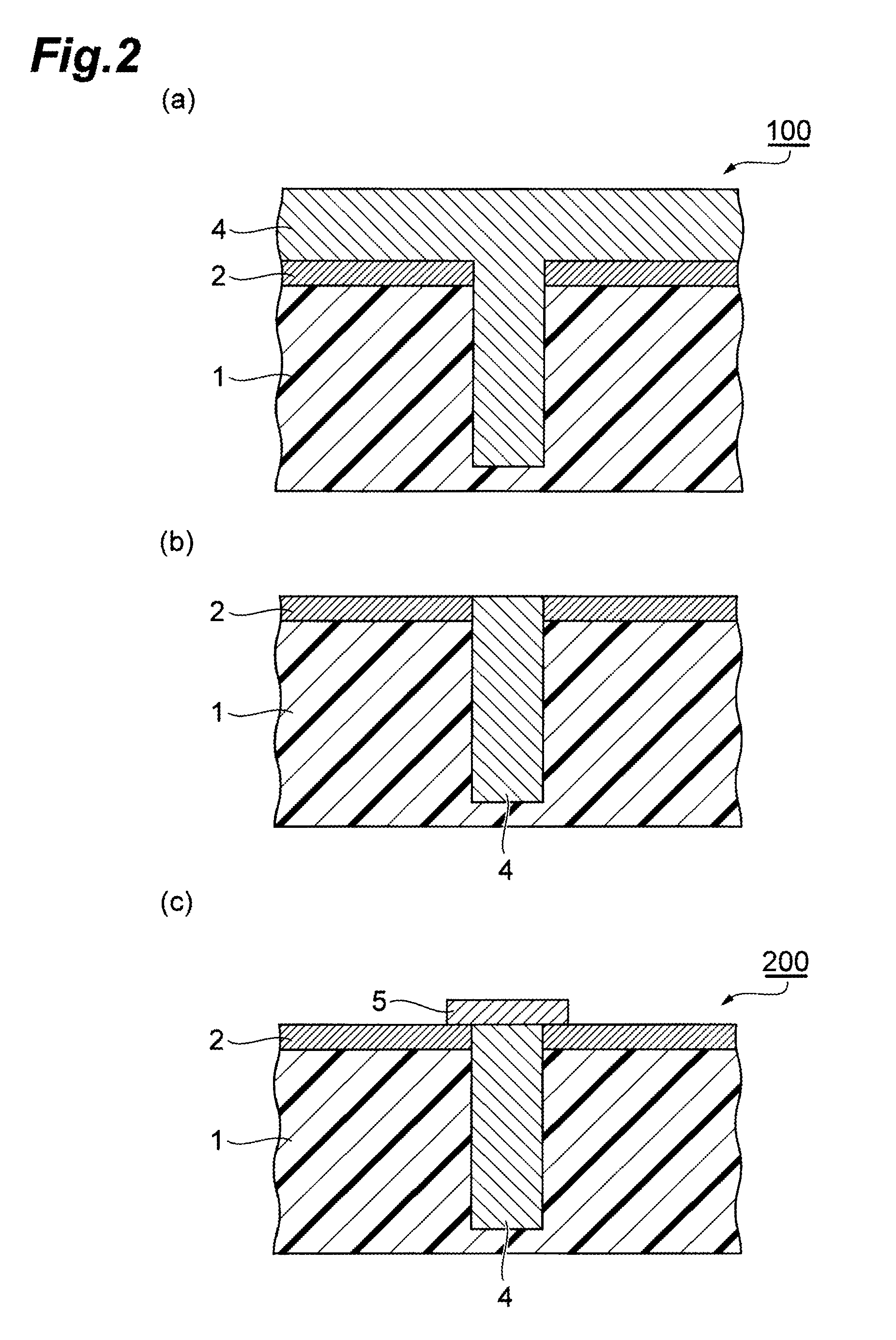Abrading agent and abrading method
a technology of abrading agent and abrading method, which is applied in the field of polishing agent, can solve the problems of inadequate polishing speed and poor suitability of methods for copper alloy wiring application, and achieve excellent polishing properties, low surface roughness after polishing, and high polishing speed
- Summary
- Abstract
- Description
- Claims
- Application Information
AI Technical Summary
Benefits of technology
Problems solved by technology
Method used
Image
Examples
example 1
[0085]To 550 g of water there were added 10 g of 96% sulfuric acid, 10 g of 85% phosphoric acid, 50 g of glycine, 10 g of benzotriazole (BTA), 10 g of oxalic acid and 50 g of colloidal silica with a mean particle size of 70 nm (solid content: 20%) prepared by hydrolysis of tetraethoxysilane in an ammonia solution, and the components other than colloidal silica were dissolved. There was further added 25% ammonia water to adjust the pH of the solution to 2.6, and then purified water was further added to a total amount of 700 g. To this there was added 300 g of hydrogen peroxide water (reagent grade, 30% aqueous solution) to obtain polishing agent 1 with a total mass of 1000 g.
example 2
[0086]Polishing agent 2 was prepared in the same manner as Example 1, except that 10 g of malonic acid was added instead of oxalic acid.
example 3
[0087]Polishing agent 3 was prepared in the same manner as Example 1, except that 10 g of maleic acid was added instead of oxalic acid.
PUM
| Property | Measurement | Unit |
|---|---|---|
| mean particle size | aaaaa | aaaaa |
| thickness | aaaaa | aaaaa |
| thickness | aaaaa | aaaaa |
Abstract
Description
Claims
Application Information
 Login to View More
Login to View More - R&D
- Intellectual Property
- Life Sciences
- Materials
- Tech Scout
- Unparalleled Data Quality
- Higher Quality Content
- 60% Fewer Hallucinations
Browse by: Latest US Patents, China's latest patents, Technical Efficacy Thesaurus, Application Domain, Technology Topic, Popular Technical Reports.
© 2025 PatSnap. All rights reserved.Legal|Privacy policy|Modern Slavery Act Transparency Statement|Sitemap|About US| Contact US: help@patsnap.com



